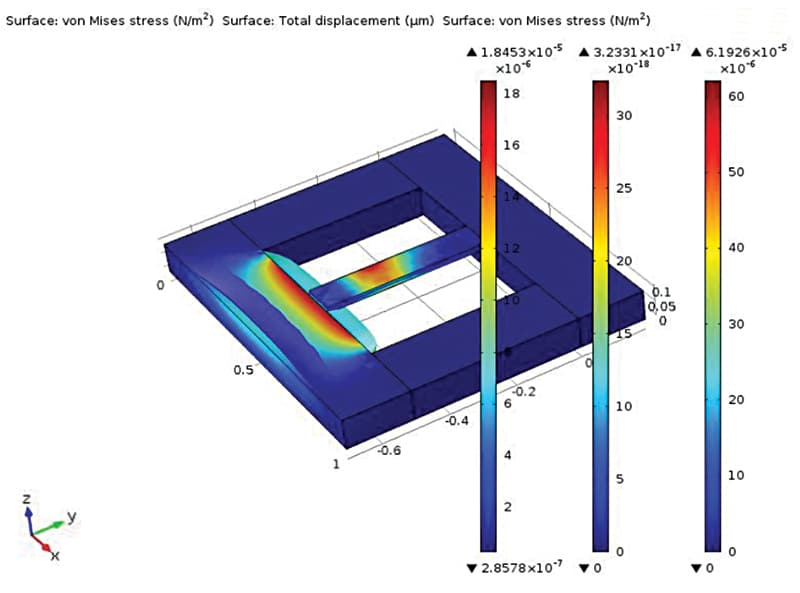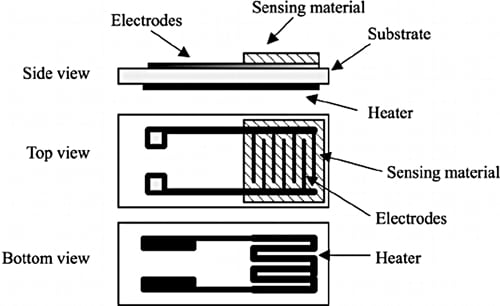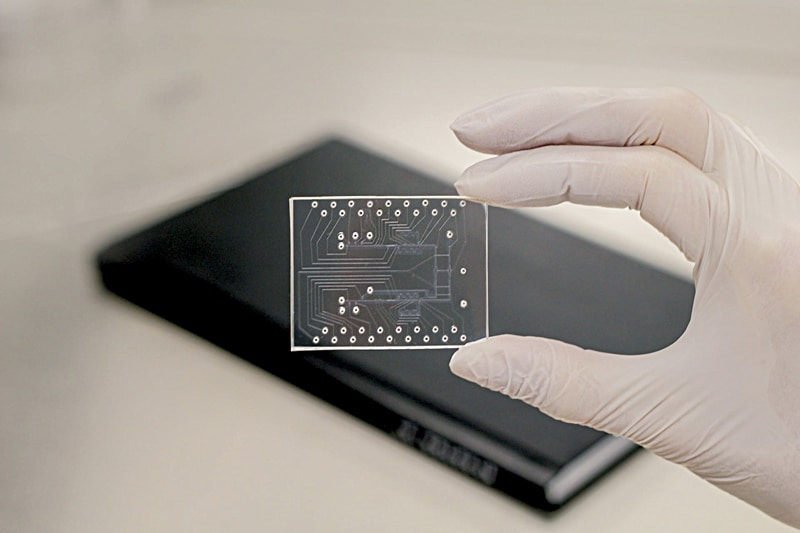With MEMS sensors at the forefront of cancer diagnostics, we stand on the cusp of a new era of precision medicine and improved patient outcomes in the fight against cancer. These tiny devices empower healthcare professionals to detect cancer cells earlier, monitor treatment response in real time, and offer personalised care.
MEMS (micro-electromechanical systems) and microfluidics are two exciting fields of technology that have converged remarkably in recent years. MEMS devices are miniature systems made of tiny mechanical and electrical components, often using semiconductor manufacturing techniques.
On the other hand, microfluidics involves the manipulation and control of small amounts of fluids in microscale channels and chambers.

The fusion of MEMS and microfluidics has given rise to a new class of devices with extraordinary capabilities. These integrated systems leverage the precision and scalability of MEMS technology to manipulate fluids at the micro scale, enabling applications in various domains such as biomedical diagnostics, drug delivery, chemical analysis, and lab-on-a-chip systems.
By combining microfluidic channels and chambers with MEMS components like sensors, actuators, and valves, these devices can perform tasks like sample handling, mixing, separation, and analysis with unprecedented efficiency.
The integration of MEMS and microfluidics offers benefits such as reduced sample volumes, faster analysis times, improved sensitivity, and increased automation. The potential impact of MEMS and microfluidics fused devices is immense.
They have the potential to revolutionise healthcare by enabling point-of-care diagnostics, personalised medicine, and portable lab-on-a-chip platforms. Moreover, they can find applications in environmental monitoring, food safety, and industrial processes.

Cancer Diagnostics using MEMS and Microfluidics
MEMS sensors have shown promise in the field of cancer detection and identification. These sensors are miniature devices that integrate mechanical and electrical components on a microscopic scale. When it comes to cancer cell identification, MEMS sensors offer several advantages such as:
Size and Sensitivity
MEMS sensors are extremely small, allowing them to be easily integrated into lab-on-a-chip devices or handheld diagnostic tools. Their small size enables them to interact with individual cells or small clusters of cells. These sensors can detect subtle changes in physical properties such as size, shape, and mechanical behaviour, which are indicative of cancer cells.
Label-free Detection
One significant advantage of MEMS sensors is their ability to detect cancer cells without the need for specific labels or markers. This label-free detection approach eliminates the requirement for additional processing steps, reducing the complexity and time required for analysis. MEMS sensors can directly interact with cells and provide real-time, label-free information.
Mechanical Characterisation
Cancer cells exhibit distinct mechanical properties compared to healthy cells. MEMS sensors can measure mechanical properties such as stiffness, deformability, and viscoelasticity of cells. By subjecting cells to controlled mechanical forces, MEMS sensors can detect differences in cell behaviour, identifying cancer cells based on their unique mechanical signatures.
High Throughput Screening
MEMS sensors can be designed to operate in an array format, allowing for high-throughput screening of cells. Multiple sensors can be fabricated on a single chip, enabling simultaneous analysis of multiple cells or cell populations. This feature is particularly useful for applications where a large number of cells need to be analysed rapidly such as in cancer diagnostics or drug screening.
Real-time Monitoring
MEMS sensors offer the potential for real-time monitoring of cancer cells. By continuously monitoring cellular behaviour and changes in physical properties, these sensors can provide dynamic information about cell growth, migration, and response to treatment. Real-time monitoring allows for early detection of cancer cells and facilitates the evaluation of treatment efficacy.
In conclusion, MEMS sensors provide a promising approach for the identification of cancer cells. Their small size, sensitivity, label-free detection, ability to characterise mechanical properties, high throughput screening capability, and potential for real-time monitoring make them valuable tools in cancer diagnostics and research.
Continued advancements in MEMS sensor technology hold the potential to revolutionise cancer detection and improve patient outcomes through early diagnosis and personalised treatment strategies.

Applications
MEMS sensors, or Micro-Electro-Mechanical Systems sensors, have shown promising potential in various fields, including cancer diagnostics. Their small size, high sensitivity, and ability to integrate with microelectronics make them ideal for developing advanced diagnostic devices. Here, we explore the applications of MEMS sensors in cancer diagnostics devices.
1. Biomarker Detection:
MEMS sensors can be utilised to detect specific biomarkers associated with cancer. These sensors can detect minute changes in the concentration of biomarkers present in bodily fluids such as blood or urine. By accurately measuring these biomarkers, MEMS sensors enable early detection of cancer, monitoring disease progression, and assessing treatment efficacy.
2. Liquid Biopsies:
MEMS sensors are being integrated into liquid biopsy devices, which are non-invasive alternatives to traditional tissue biopsies. Liquid biopsies analyse circulating tumour cells (CTCs) and cell-free DNA (cfDNA) in the blood. MEMS sensors play a crucial role in capturing, isolating, and analysing these cancer-related cells and genetic materials, offering valuable insights into tumour presence, mutation profiling, and treatment response.
3. Point-of-care Testing:
MEMS-based cancer diagnostic devices can facilitate point-of-care testing, bringing diagnostic capabilities closer to the patient. These portable devices, equipped with MEMS sensors, can rapidly detect cancer biomarkers, allowing for early diagnosis and immediate treatment decisions in remote or resource-limited settings. The integration of MEMS sensors with microfluidics enables precise and automated sample handling, improving the efficiency and accuracy of point-of-care cancer diagnostics.
4. Tissue Analysis:
MEMS sensors can be used in tissue analysis devices to assess cellular characteristics and identify cancerous tissues. These sensors enable real-time monitoring of cellular properties such as mechanical stiffness, electrical impedance, or refractive index. By analysing these properties, MEMS-based tissue analysis devices can differentiate between healthy and cancerous tissues, aiding in tumour localisation and surgical guidance.
5. Wearable Sensors:
MEMS sensors can be incorporated into wearable devices to continuously monitor physiological parameters related to cancer such as heart rate, respiratory rate, or body temperature. These sensors enable long-term monitoring and early detection of cancer associated symptoms or physiological changes. Continuous monitoring using wearable MEMS sensors provides valuable data for disease management, treatment optimisation, and personalised care.
6. Lab-on-a-chip Platforms:
MEMS sensors are integral components of lab-on-a-chip platforms, which integrate multiple diagnostic functions onto a single chip. These platforms allow for the miniaturisation and automation of complex laboratory procedures, enabling rapid and cost-effective cancer diagnostics. MEMS sensors integrated into lab-on-a-chip devices contribute to precise sample handling, accurate detection, and real-time monitoring of cancer-related biomarkers.
MEMS sensors offer significant potential in cancer diagnostics devices. Their high sensitivity, miniaturisation capabilities, and compatibility with microelectronics enable the development of advanced and portable devices for early cancer detection, liquid biopsies, point-of-care testing, tissue analysis, wearable monitoring, and lab-on-a-chip platforms.
By harnessing the power of MEMS technology, cancer diagnostics can be enhanced, leading to improved patient outcomes, personalised treatment approaches, and better management of the disease.
Also Read:
- AI Algorithm To Identify Cancer
- Cancer Cells Turned Into Logic Gates!
- Is A Cure For Cancer Possible?
- Detecting Cancer Without Invasive And Expensive Surgery
The author, Duraiarasu E, is pursuing B.E ECE at Rajalakshmi Engineering College, Chennai. His areas of interest are IoT, VLSI, embedded systems, machine learning, 3D printing, and MEMS





